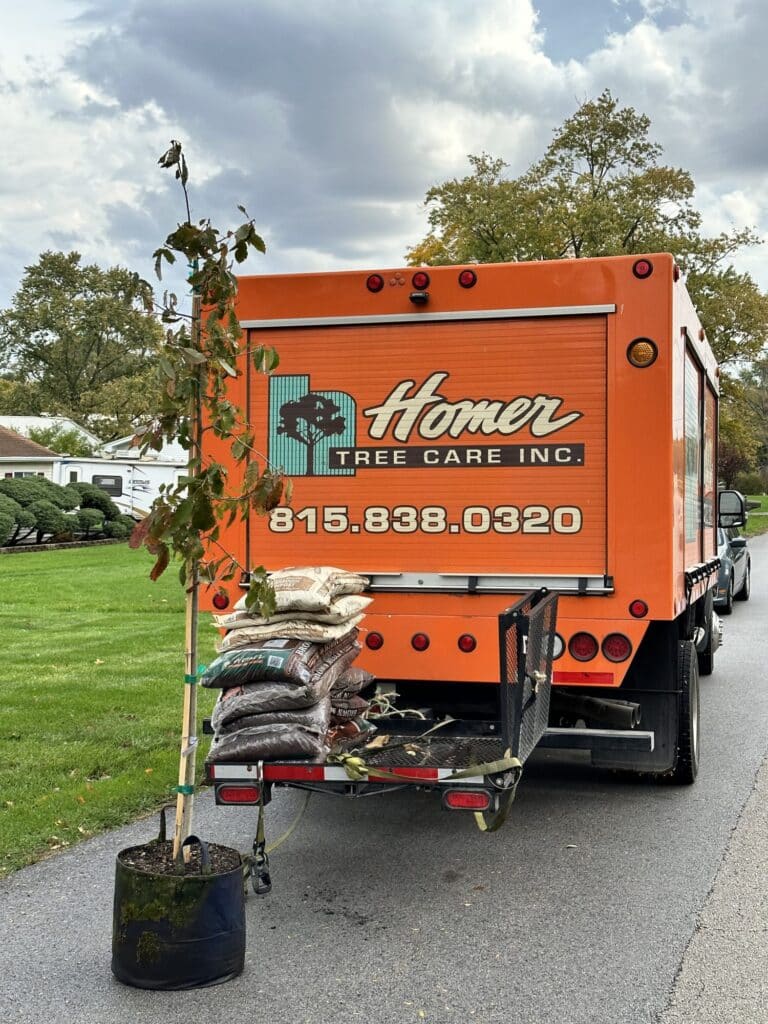In the last blog post, we discussed the method of ball and burlap transplanting of trees. The ball and burlap method has advantages and disadvantages. Trees excavated for ball and burlap are more susceptible to drought stress, may be difficult to plant correctly, take time to establish into the landscape, and are big and heavy requiring heavy machinery to move and transplant. With these deficiencies in mind, what other methods exist for growing and transplanting that may improve on these shortcomings of ball and burlap?
Trees are commonly grown in field nurseries where they are planted and later transplanted to a final location. However, just like any other plant, trees may be grown above ground in containers. Traditional plastic containers introduce new problems related to soil moisture and temperature, and root development within the confined space. The hard plastic shell of the traditional container will create roots circling the exterior of the pot, as they grow out from the root flare and meet the edge of the container. This problematic root development must be properly sheared off before transplant so all existing roots are growing in the correct direction away from the trunk. However, with a container-grown tree, much less root mass is removed at transplant which means a faster-growing and healthier plant in that initial period after planting.
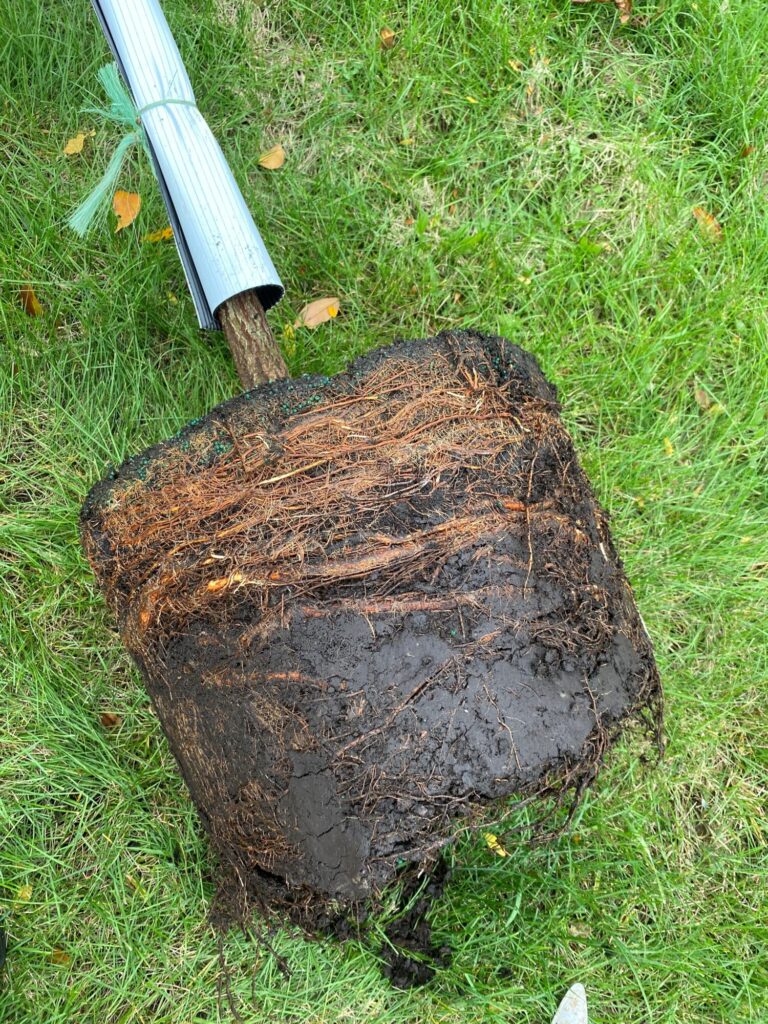
Another alternative that we prefer for planting is grow bags. Grow bags are synonymous with root pouches or root bags. These are plant-growing containers that are made out of a porous mesh-like material which allows water and gas exchange outside of the root ball and encourages the proper development of a healthy root system. The porous sides of the container stops the development of circling roots by “air pruning” any roots that find the edge of the grow bag. When the root tip meets the open air outside of the container wall, it will naturally stop growing outward and instead develop smaller fibrous roots inside the container. This produces a much better structured and richer root structure which is more resilient to drought stress and faster growing.
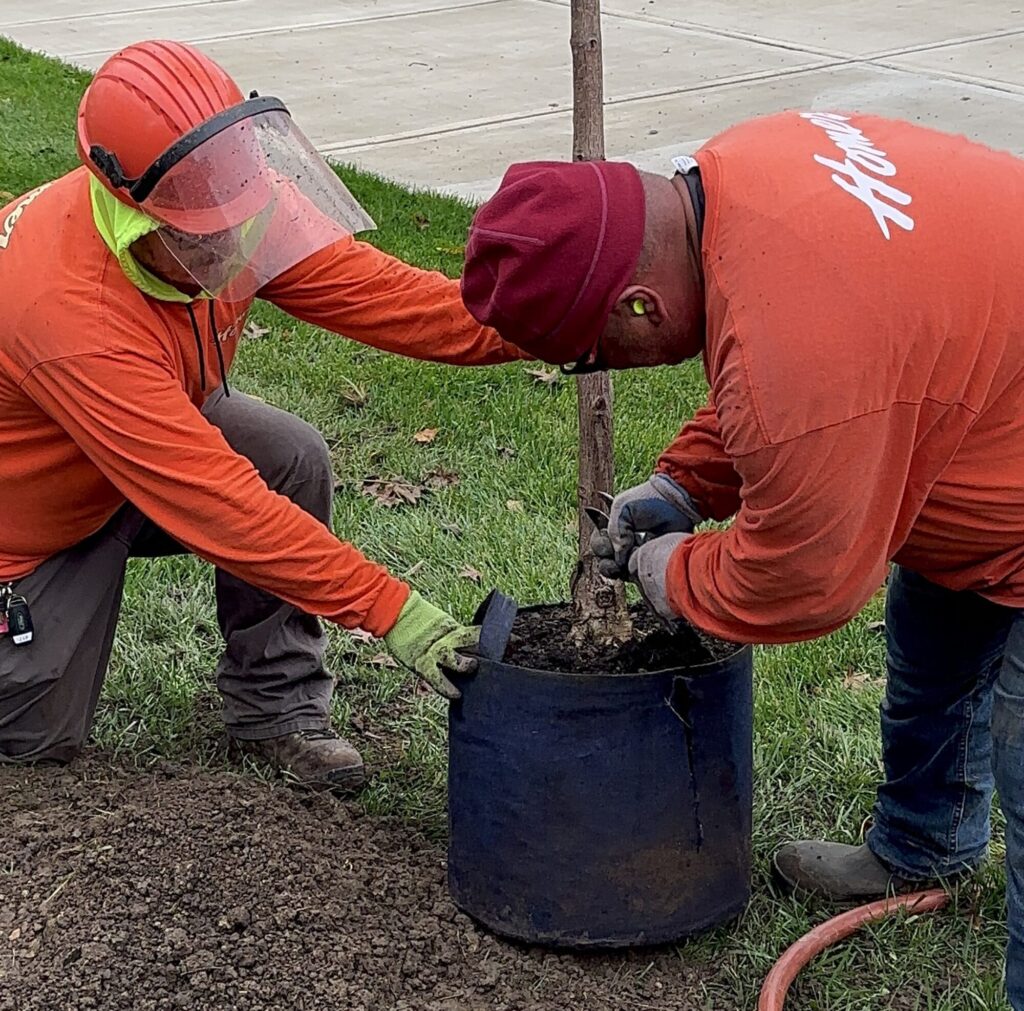
This difference in root structure and development means that a grow bag tree will establish and begin growing much more quickly than a traditional ball and burlap-grown tree. A grow bag tree will establish and begin putting on new growth immediately after transplant instead of waiting years for the growth of new roots and recovery from root damage caused by a tree spade. They also are more drought stress resistant, since more root mass is left intact and establishment happens much more rapidly. We like using this material because of these advantages for our customers, but also because they’re much easier to handle and use. We primarily work with 15-gallon grow bags, which can be carried by one or two workers without the need for heavy machinery or potential damage to turf grass. More trees can also be transported at once on a truck or trailer. However, a 15-gallon grow bag tree is smaller at the time of transplant. Our grow bag tree will develop more quickly and surpass a traditional ball and burlap tree in size after a few years of development, but will be smaller at the time of transplant and for a few years after planting. This method isn’t the best for folks who want a bigger tree immediately.
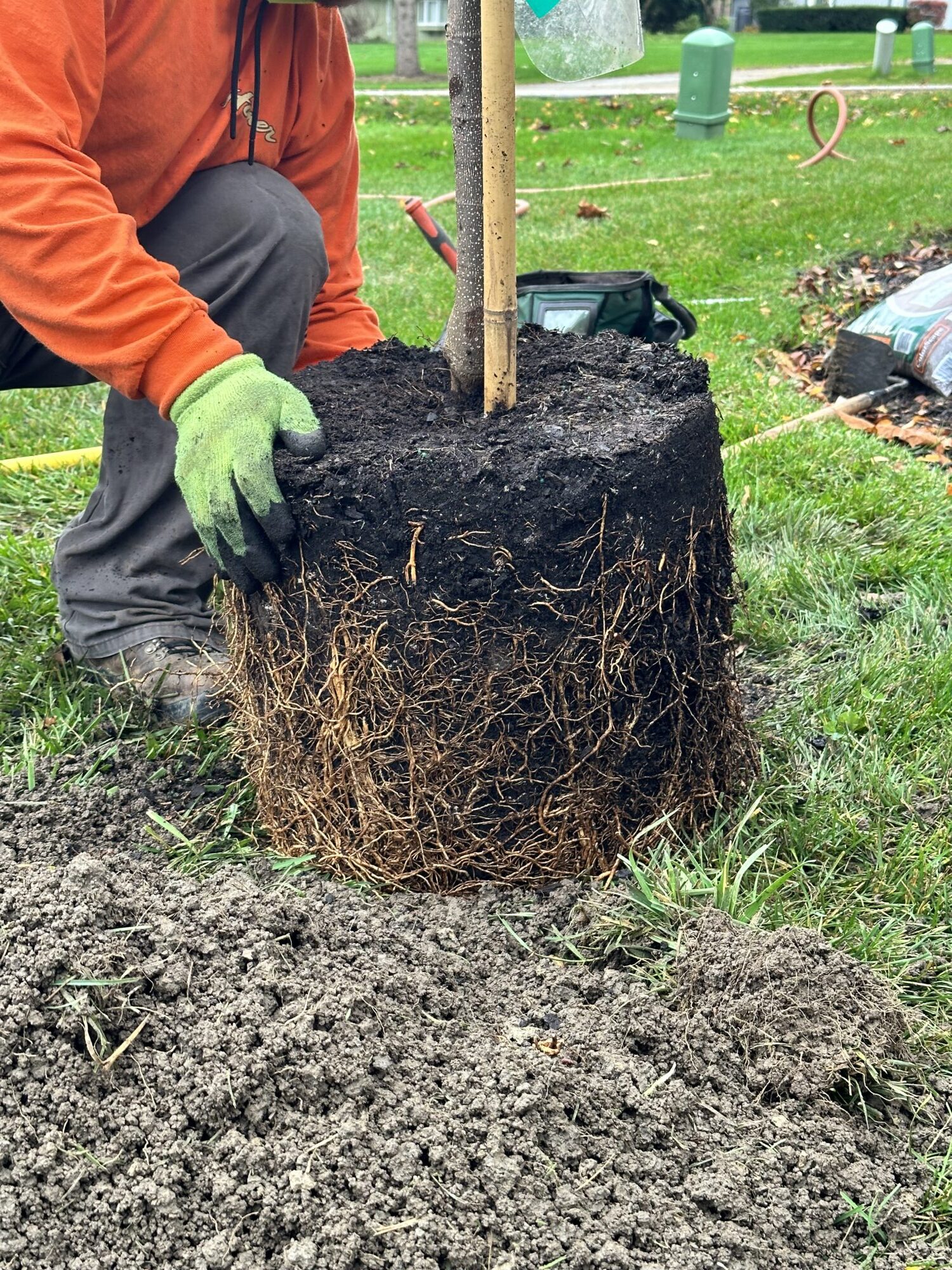
We perform these plantings with our air spade tool, which we’ve talked about extensively in the past. Our air spade makes digging and planting simple, efficient, and very safe. The air spade naturally fluffs the surrounding soil and allows for easy amendment with compost to help enrich the soil and improve drainage and nutrition. Air spade planting also means no need for machinery to damage turf grass or other plantings potentially. The smaller root bag material is also easier for us to work with and ensure it’s handled properly and planted to the correct depth. We consider our methods to be some of the best in landscape tree planting, and as tree care experts we’re well-suited as stewards of your landscape trees and shrubs.
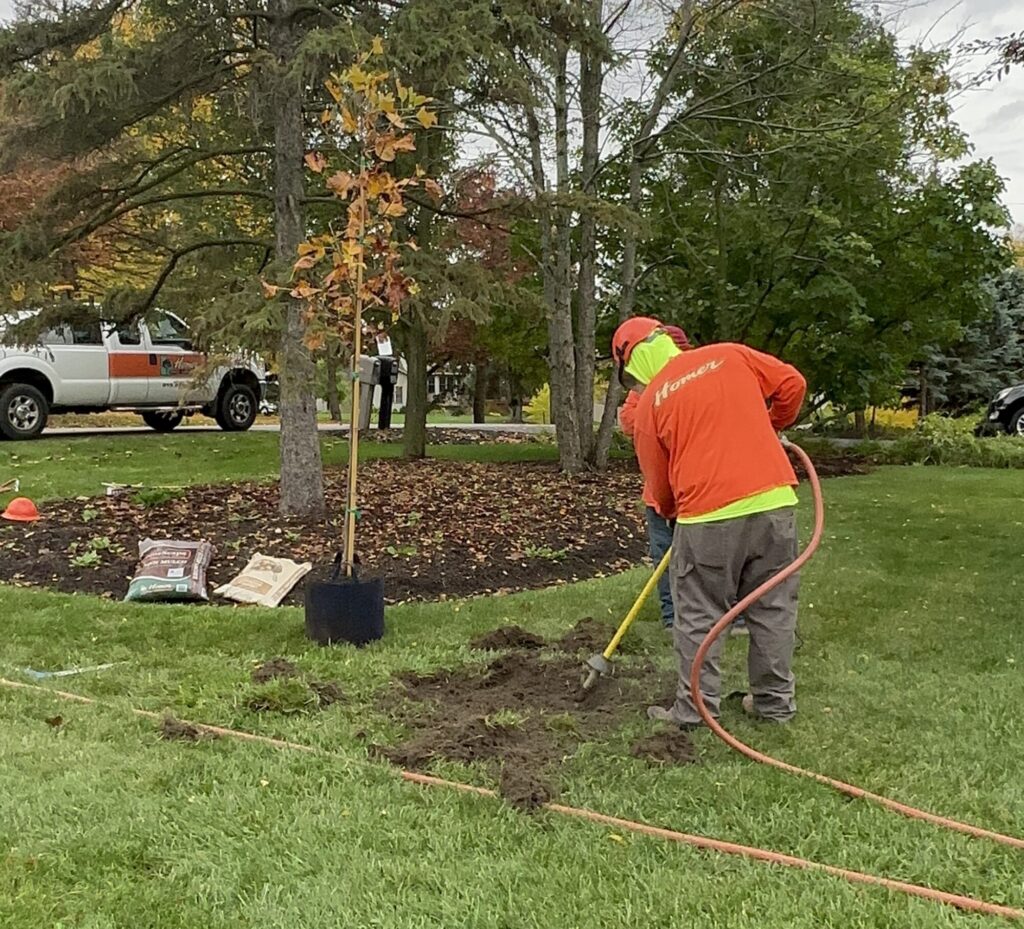
We hope this article was informative and interesting. Give our arborists a call if you have any questions or concerns about a transplanted tree.

